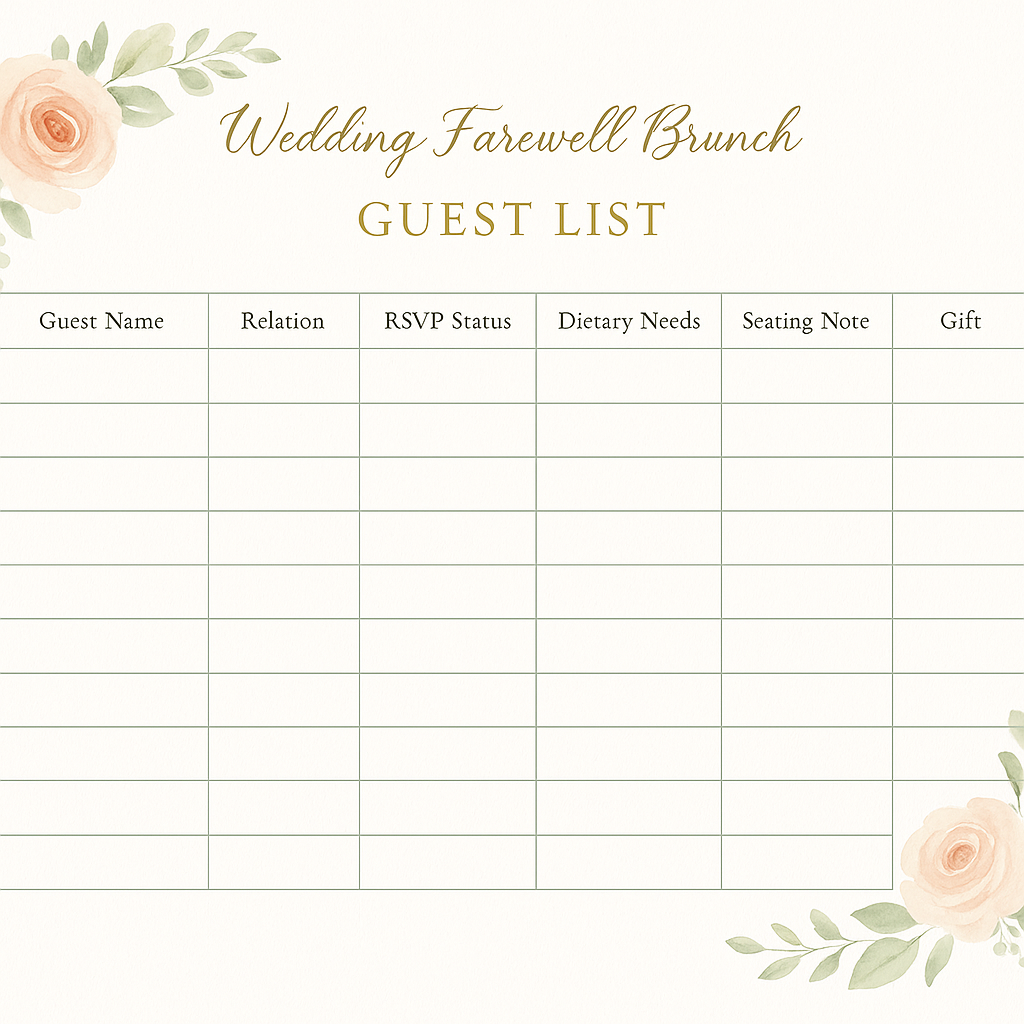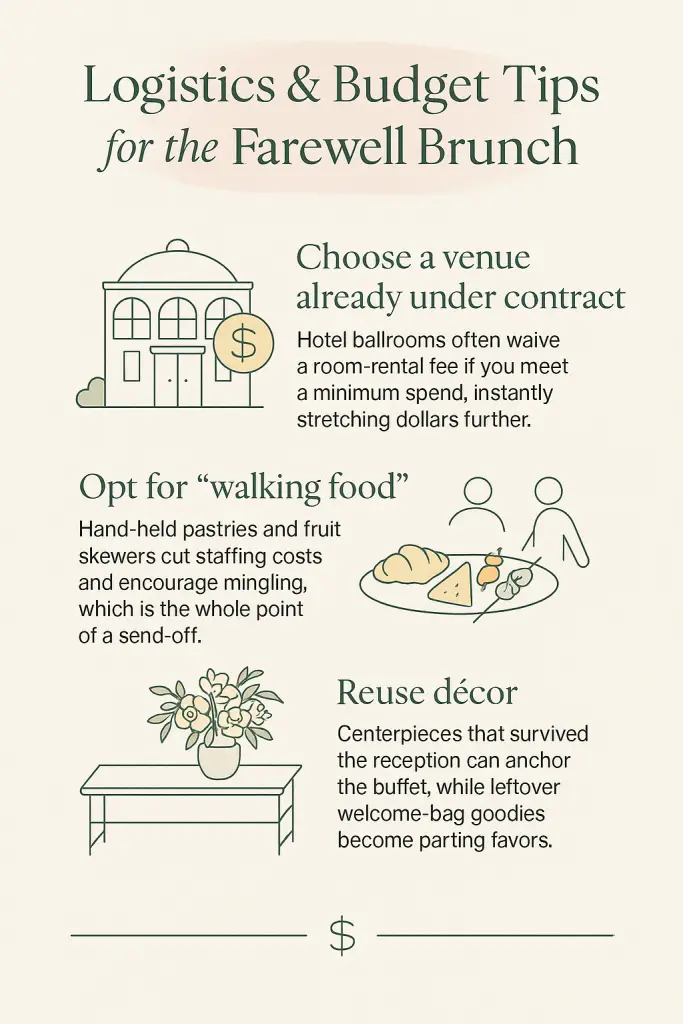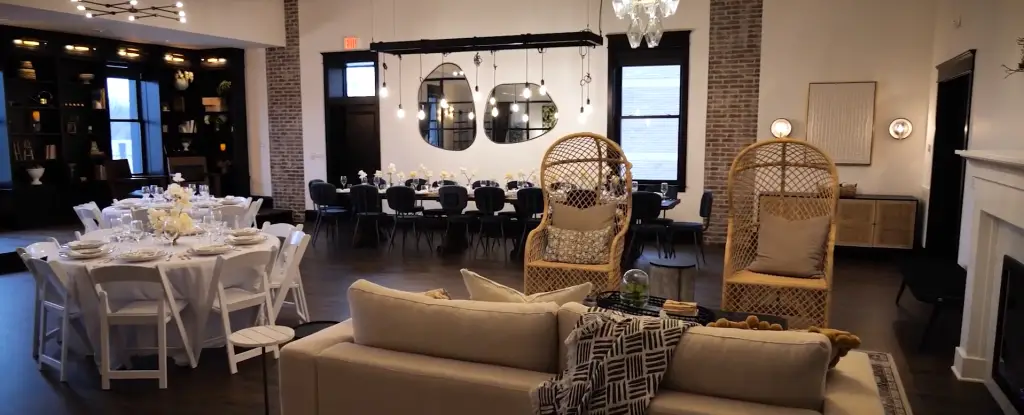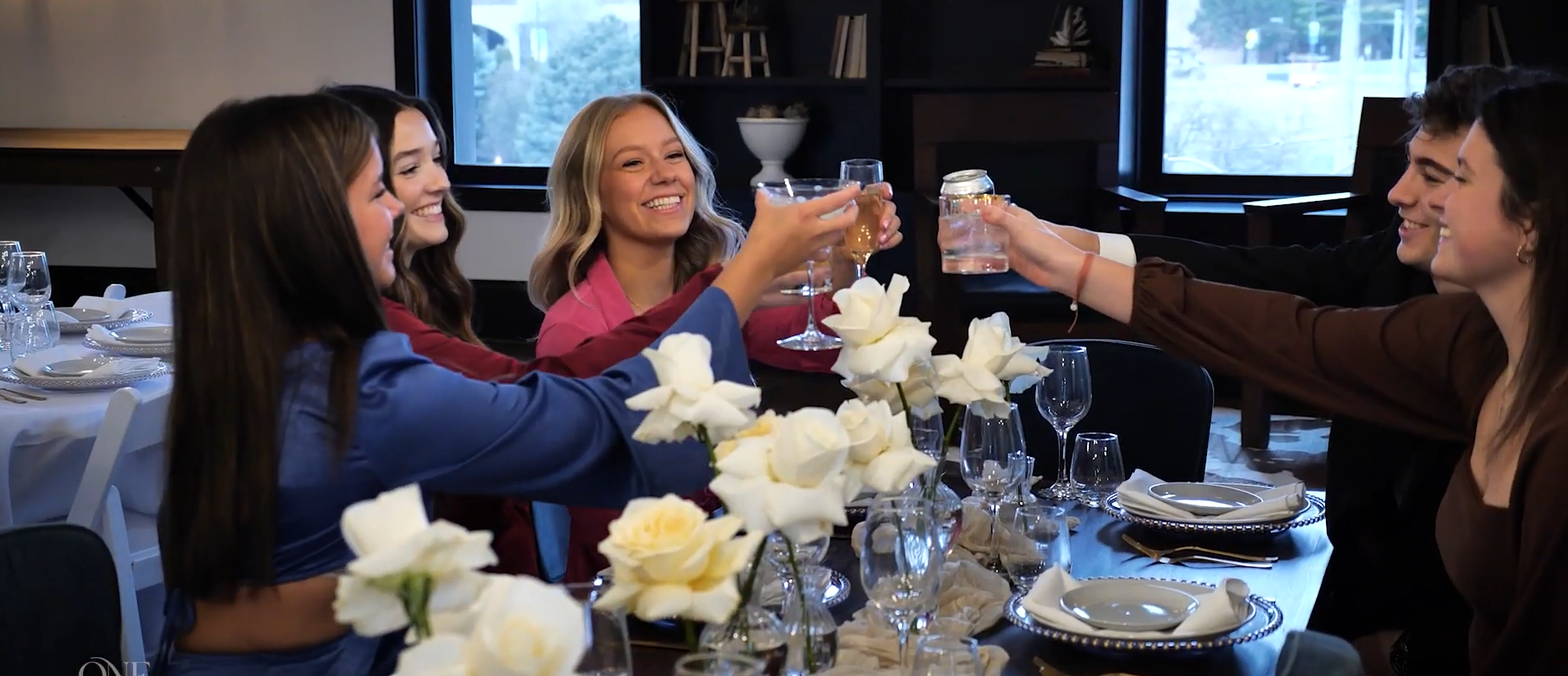Weekend‑long celebrations gained steam in the 2010s, but in 2025 the humble Sunday send‑off has become the standout finale.
Far from feeling like an after‑thought, a thoughtfully planned farewell brunch gives couples one last chance to connect with guests, extend the wedding “glow,” and end the festivities on a relaxed, gratitude‑filled note.
Where Farewell Brunch Began—and Why It Faded
The tradition traces back to destination weddings of the 1990s, when hosts treated out‑of‑town guests to breakfast before everyone caught flights home.
As budgets tightened after the 2008 recession, many couples trimmed the extra meal. Then came the “epic after‑party” era; a 2024 trend round‑up from Over the Moon noted that late‑night revelry often “pushed out” the brunch altogether.
Today’s revival hinges on a cultural reset: couples marry later, spend more per guest, and prize quality time over jam‑packed itineraries. A leisurely send‑off fits that mindset perfectly.
Why the Brunch Is Trending Again
Rising destination and multi‑day weddings are a major driver. A record share of pairs now host two‑ or three‑day affairs so guests feel their travel investment was worthwhile.
In its Ultimate Wedding Weekend Timeline, Zola places a farewell brunch from 10 a.m. to 1 p.m. on Sunday, giving everyone a structured yet low‑key goodbye.
"Unforgettable weekend"😍#InPics: Newlyweds #AmyJackson and #EdWestwick at their farewell brunch with friends and family#amyjackson #edwestwick #celebweddings #trendingnow #weddings #gossipgirl pic.twitter.com/QDfracSpCo
— BombayTimes (@bombaytimes) August 31, 2024
Another factor is the simple desire for meaningful conversation; couples routinely tell planners they “barely saw” friends on the reception dance floor, but over omelets and cold‑brew they can finally replay the vows, swap photos, and thank loved ones face‑to‑face.
Wellness culture is also nudging brunch back into favor. With breath‑work sessions and aromatherapy favors already rising,
The Knot reports that guests appreciate gentle food, green juice, and sunshine after a night of Champagne.
Finally, the meal is relatively cost‑effective. Buffet‑style breakfasts average US $20‑$35 per person—far below a Saturday reception entrée—allowing couples to be generous without blowing the budget.
Etiquette and Guest List
Zola’s planning guide suggests inviting the wedding party, close family, and any guests who stayed on‑site or traveled a considerable distance.

Opening seats to everyone still in town can feel more inclusive, especially for celebrations under 100 people, and the modest per‑person cost makes that option feasible.
Whatever the scope, hosts should post clear details on the wedding website so early departures don’t feel obligated and local guests don’t drop in unannounced.
Menu Inspiration Guests Will Remember
A farewell brunch doesn’t require a lavish carving station. Popular pairings this year range from build‑your‑own bagel bars layered with smoked‑salmon flights, flavored vegan schmears, and local pickled vegetables to South‑of‑France picnic spreads featuring quiches, salade Niçoise, and lavender‑honey yogurt pots.
Many hosts also add a bubbly‑and‑brew cart so guests can pour custom mimosas or cold‑brew on tap.
For décor, couples often echo the wedding palette in subtle ways—pastel linens that mirror ceremony flowers or menu cards printed in the same font as the invitation suite—so the weekend’s style feels cohesive through the final bite.
Logistics and Budget Tips
One savvy move is choosing a venue already under contract. Hotel ballrooms often waive room‑rental fees if a minimum food‑and‑beverage spend is met, instantly stretching the brunch budget.
Another strategy is serving “walking food” such as hand‑held pastries, fruit skewers, and frittata squares; these reduce staffing needs and encourage the mingling that makes a send‑off memorable.

Reusing décor extends the thrift. Centerpieces that survived the reception can anchor the buffet, and leftover welcome‑bag goodies easily become parting favors.
The team at Adorn Bridal also advises setting soft start and end times so guests can drift in as they pack, keeping the atmosphere relaxed.
Sustainability Meets Sentiment
Couples committed to greener celebrations appreciate that brunch can actually reduce waste by repurposing food and florals.
Compostable bamboo plates or rented china used for both the reception and brunch lower single‑use plastics, while a menu heavy on seasonal produce boasts a lighter carbon footprint.
Parting gifts follow suit. Some hosts slip seed packets branded “Let Love Grow” into place settings, while others send guests home with local coffee beans stamped with the wedding crest.
A growing number prefer donation cards that support breakfast‑focused charities such as No Kid Hungry, reinforcing the feel‑good tone.
Making It Personal
Small gestures elevate the morning from standard continental breakfast to cherished memory.
Couples often slide handwritten notes under hotel doors inviting guests by name, a touch that makes everyone feel seen.

A gentle playlist of acoustic covers curated by the newlyweds keeps energy calm yet celebratory, and a clothesline of Polaroids from the wedding invites friends to grab their favorite candid shot on the way out.
To ease departures, one attendant stationed near the exit can offer directions to the airport, bottles of water, and neatly wrapped pastries for the road.
Food for Thought
After a whirlwind weekend, the farewell brunch is the slow exhale every celebration needs. It lets newlyweds relive highlights, gives guests closure, and wraps the festivities in gratitude rather than exhaustion.
By leaning on cost‑savvy menus, sustainable practices, and heartfelt touches, couples can revive this classic tradition in a way that feels perfectly 2025.
Whether you’re planning a mountaintop micro‑wedding or a 200‑person coastal fête, consider capping the festivities with a calm, sunlit meal.
Your guests—and your future selves flipping through the photos—will thank you for giving everyone one last bite of the magic before heading home.

